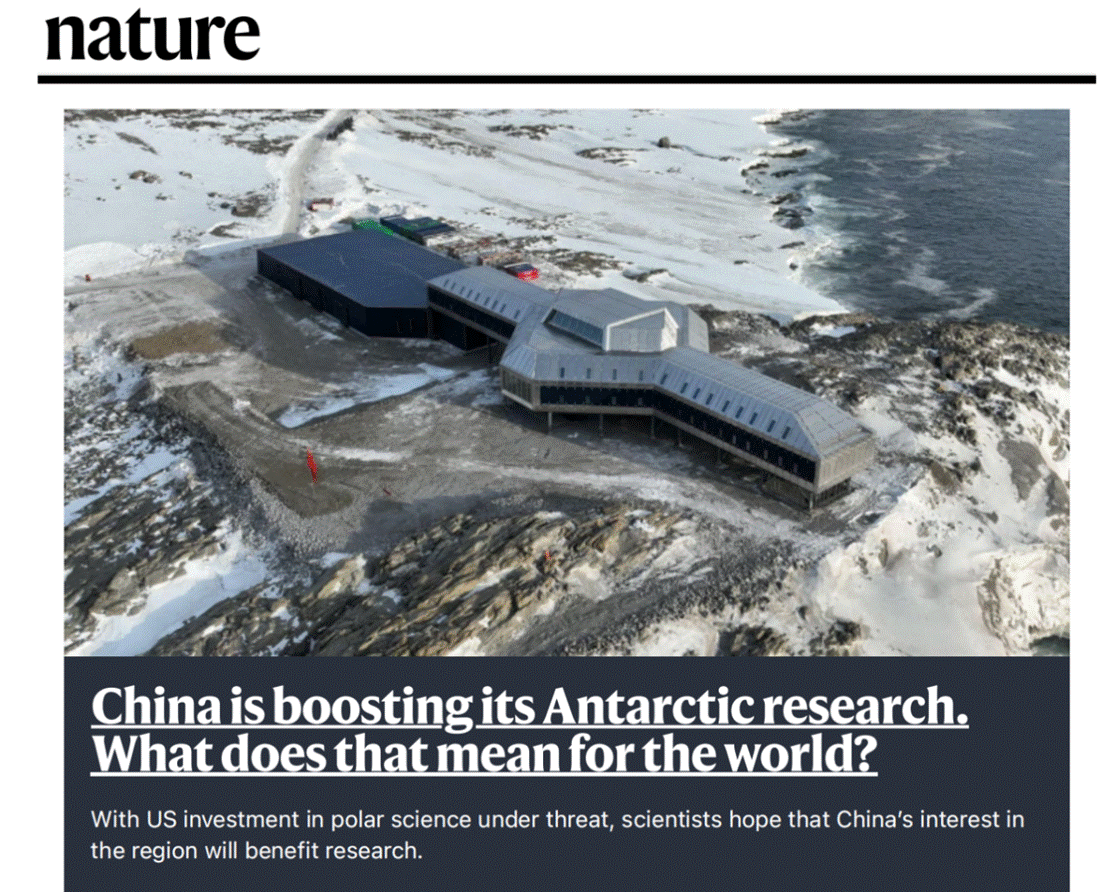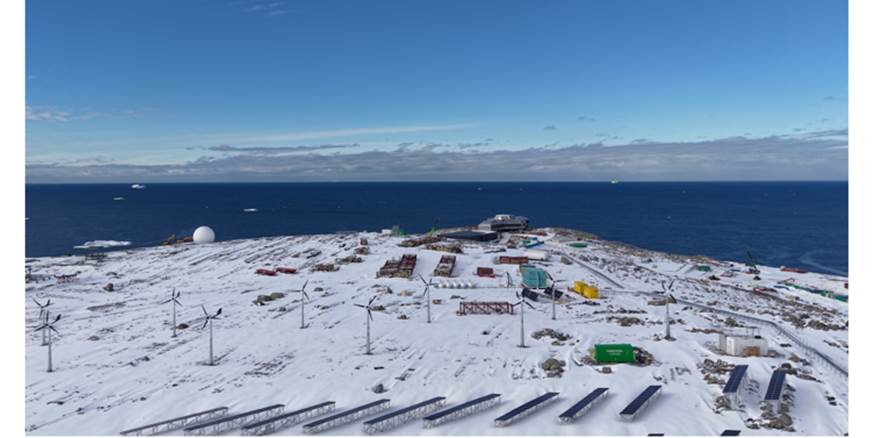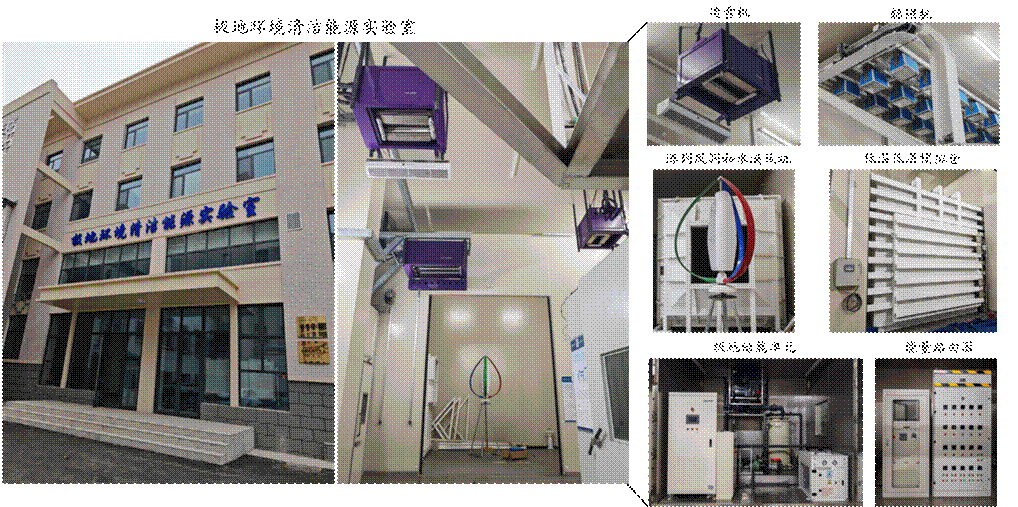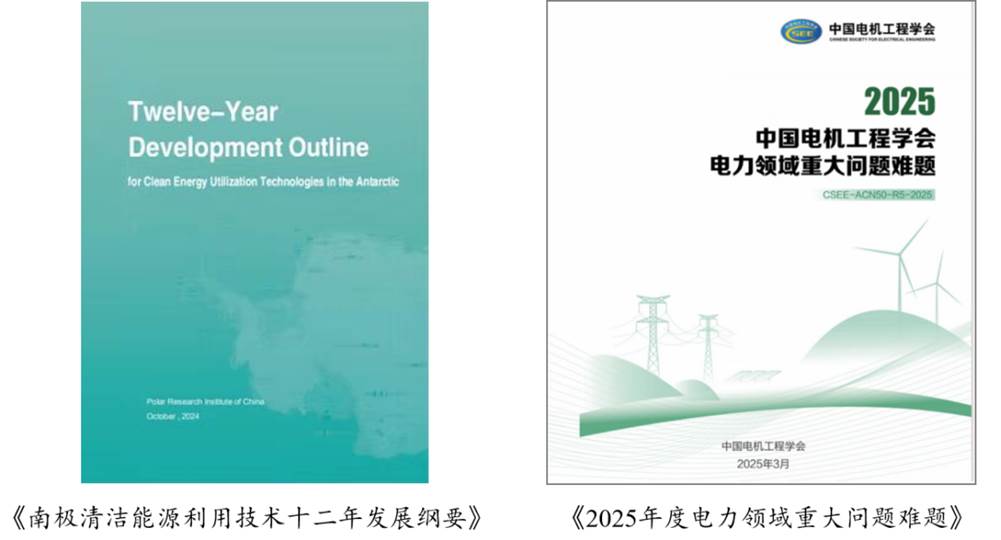Background: On March 1, 2025, China’s first large-scale new energy system at Qinling Station in Antarctica was officially launched, becoming the world's first large-scale clean energy system in extreme Antarctic conditions. This marked China’s achievement in green scientific research in the polar energy sector. Professor Sun Hongbin from the Department of Electrical Engineering and Applied Electronics (EEA) at Tsinghua University is the chief scientist of the project. Since its commissioning, it has been reported by major media outlets, including CCTV, Xinhua, CGTN, and China Daily, sparking global scientific community attention toward China's leadership in Antarctic scientific exploration.

Figure 1: July 22, 2025, Nature News homepage
On July 22, 2025, Nature, a top international academic journal, featured the headline “China is boosting its Antarctic research. What does that mean for the world?” The article focused on the latest progress in China’s Antarctic research and highly praised the clean energy system at Qinling Station, designed and developed under the leadership of Professor Sun Hongbin. The report cited comments and viewpoints from several renowned experts worldwide.
The article quoted Shen Jun, director of the Polar Research Office of the National Oceanic Administration, who introduced, “Qinling Station is China’s first research station in the southern Antarctic... It will conduct research in marine and land ecology, sea ice, geophysics, and wildlife studies.” Christina Hulbe, former vice president of the International Glaciological Society and a professor at the University of Otago in New Zealand, commented, “Qinling Station provides excellent geographic conditions for addressing a range of cutting-edge Antarctic scientific challenges.”
The article also reported that earlier this year, Qinling Station deployed a clean energy system that includes photovoltaic, wind power, energy storage batteries, and hydrogen storage equipment, which is expected to meet over 50% of the station's energy demand. Nobel laureate and U.S. National Academy of Sciences member Professor Daniel Kammen highly praised, “Other research stations should follow Qinling Station's approach.”
Previously, many well-known international polar research scholars also gave high praise. Kim Yeadong, former chairman of the International Scientific Committee on Antarctic Research, noted in Science and Technology Daily, “Building a clean energy platform in Antarctica faces huge technical challenges. Qinling Station’s achievement of 60% renewable energy utilization is worth attention... It not only responds to the global carbon neutrality consensus but also provides a Chinese solution for the energy transformation of Antarctic research stations.” Richard Wies, a polar energy expert at the University of Alaska, commented in IEEE Electrification Magazine, “Qinling Station in Antarctica has successfully built the world’s first large-scale clean energy system primarily based on renewable energy, capable of operating year-round. This milestone development leads Antarctic scientific exploration into a green new era.”
Project Introduction:
For a long time, Antarctic scientific research has heavily relied on fuel oil, with approximately 40 permanent research stations worldwide depending on oil for primary energy supply. As Antarctic research activities have increased, this energy system has become inadequate for the development of “green research.” However, the extreme cold, strong winds, blizzards, and the natural phenomenon of polar day and night pose significant challenges for the development and storage of clean energy. To address the extreme environmental conditions of Antarctica, the clean energy system at Qinling Station required specialized research and development.
Since 2021, under the organization of the Chinese Polar Research Center, Professor Sun Hongbin has served as the chief scientist, organizing Tsinghua University’s research team and collaborating with Taiyuan University of Technology, China Electric Power Research Institute, China Electric Power Fengye, State Power Investment Corporation, and Huaneng Group. Drawing on nearly 30 years of complex energy network research from Professor Sun's team, the project integrated electrical, mechanical, and thermal engineering disciplines, tackling key technologies such as low-temperature fuel cell cold-start technology, fuel cell anti-low-temperature freezing technology, hydrogen production-storage-delivery control systems, and multi-energy flow integrated energy management systems (IEMS) for extreme environments. Additionally, a “water drop-shaped” wind turbine designed for Antarctica's low temperatures and strong winds was developed.
In November 2023, the “Wind-Solar-Hydrogen-Storage-Load” new energy system construction project for Qinling Station was approved. In September 2024, joint commissioning tests were conducted in Taiyuan and Inner Mongolia. In November 2024, the entire system was shipped to Antarctica and arrived at Qinling Station on December 22. The system was officially delivered for use on March 1, 2025.

Figure 2: Clean energy system at Qinling Station
The system’s total photovoltaic and wind power capacity reaches 230kW, accounting for 60% of the total electricity generation capacity at Qinling Station. It also utilizes hydrogen energy as long-term energy storage, ensuring an extreme energy balance during the 180 days of polar day and night. This system can save hundreds of tons of fuel oil annually and over 30 days of transportation costs for the Xuelong ship, effectively reducing pollution and environmental damage to the station area. It also solves the global issue of Antarctic research stations’ long-term dependence on diesel. In the absence of wind or sunlight, the system can provide up to 2.5 hours of power, with a maximum load of 150kW, ensuring the safe and green operation of research equipment and basic facilities at the station.
Table 1: Clean energy system equipment configuration at Qinling Station
New Energy Equipment Type |
Configuration |
Wind Turbine |
100 kW |
Photovoltaic |
130 kW |
Hydrogen System (Fuel Cell/Storage Tank) |
30 kW/5000 standard cubic feet |
Low-Temperature Battery |
300 kWh |
To ensure the smooth implementation of the clean energy system at Qinling Station, with Professor Sun Hongbin’s support, Associate Researcher Wang Bin from EEA was selected as the university’s sole representative for China’s 41st Antarctic Expedition and traveled to Antarctica to carry out the system construction tasks. He was awarded the title of “Excellent Team Member of China’s 41st Antarctic Expedition.”
To ensure the clean energy system functions properly in Antarctica’s harsh environment, Professor Sun’s team built the world’s first polar extreme environment simulation scientific device. This device can simulate 12 extreme environmental conditions, including extremely low temperatures (<-100°C), strong winds (>60m/s), blizzards, and polar day/night, effectively addressing the difficulties of polar clean energy research, testing, and operation.

Figure 3: Polar extreme environment simulation scientific device
In line with China’s strategic need for polar research, Professor Sun Hongbin also led the compilation of the “Twelve-Year Development Outline for Clean Energy Utilization Technology in Antarctica,” which was globally released in October 2024. This document provides guidance for the development of key technologies in Antarctic clean energy equipment, systems, and operations.

Figure 4: The Outline and Major Scientific Issues
This research, supported by the National Oceanic Administration Polar Research Office and the Chinese Polar Research Center, is funded by the National Natural Science Foundation of China (U22A6007, U23A20649) and the Shanxi Energy Internet Research Institute’s major scientific support projects (SXEI2024A001).
Related Resources:
[1] “China is boosting its Antarctic research. What does that mean for the world?” Nature News.
https://www.nature.com/articles/d41586-025-02157-x (2025)
[2] “China's first large-scale clean energy system at Qinling Station in Antarctica officially commissioned” CCTV News.
https://content-static.cctvnews.cctv.com/snow-book/index.html?item_id=14806633680978973921 (2025)
[3] “China accelerates its transition to green energy in Antarctic exploration” Xinhua Net.
https://www.xinhuanet.com/20250416/79d0ca6742254f6daf99db29c65094e3/c.html (2025)
[4] “Call to Accelerate Antarctic Expeditions' Green Transition” Science and Technology Daily.
https://digitalpaper.stdaily.com/http_www.kjrb.com/ywtk/html/2025-05/10/content_588392.htm?div=-1 (2025)
[5] “Breaking the Ice with Green Power: China’s Pioneering Antarctic Energy System” IEEE Electrification Magazine.
https://ieeexplore.ieee.org/abstract/document/11023042/ (2025)
[6] “Twelve-year development outline for clean energy utilization technologies in Antarctica,” Polar Research Institute of China and Taiyuan University of Technology.
https://www.eea.tsinghua.edu.cn/en/info/1038/3207.htm (2024)

















 News & Events
News & Events